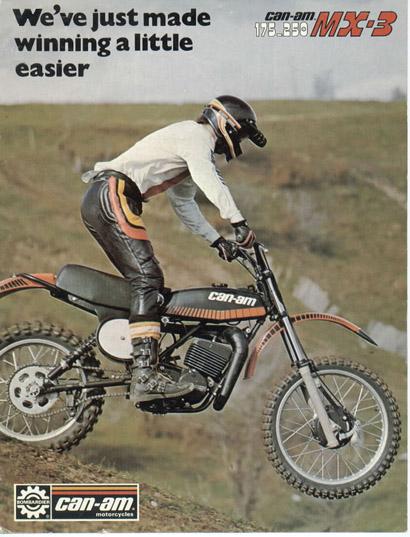

In 1973, Can-Am began producing motocross and enduro bikes using engines provided by the Austrian Rotax company, another Bombardier subsidiary. The machines made an immediate impact with riders winning Gold, Silver and Bronze medals at the International Six Days Trial, a form of off-road motorcycle Olympics. The following year, the company swept the 1974 AMA 250 cc motocross national championship with Can-Am riders Gary Jones, Marty Tripes and Jimmy Ellis, finishing first, second and third. The bikes gained a reputation for their high horsepower outputs. The Rotax motors used a slightly unusual style of intake. A rotary disc system was employed and this plate was altered repeatedly between T’n’T (track and trail) and MX models. This plate is accredited with the horsepower gain over conventional piston port motors used on Japanese motorcycles. The MX3 was the pinnacle of Can Am, produced in 1977 it produced 36 horsepower (27 kW), 6 more than the closest competitor. However, soon after the Can-Am introduction, the Bombardier corporation shifted its priority from recreational products towards diversification into the transit equipment industry and then, several years later, into aircraft manufacturing. As a result, investments in the young Can-Am division were reduced substantially. In 1983, Bombardier licensed the brand and outsourced development and production of the Can-Am motorcycles to Armstrong / CCM of Lancashire, England. 1987 was the final year Can-Am motorcycles were produced. -BRP